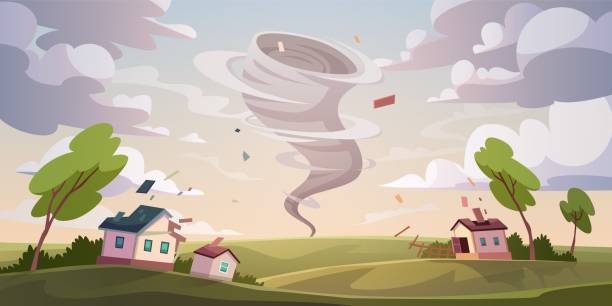As the world pivots towards sustainable living, zero-energy homes and self-sustaining properties are gaining traction. These innovative dwellings, designed to produce as much energy as they consume, represent a significant leap forward in environmentally conscious construction. With the rise of these green homes, the future of mortgage lending is poised for transformation. Let’s explore how mortgage lending for zero-energy and self-sustaining properties is evolving and what this means for buyers, lenders, and the broader real estate market.
Table of Contents
ToggleUnderstanding Zero-Energy and Self-Sustaining Properties
Before delving into the future of mortgage lending, it’s essential to understand what zero-energy and self-sustaining properties entail.
1. Zero-Energy Homes
Zero-energy homes, also known as net-zero energy homes, are designed to generate as much energy as they consume over the course of a year. This is typically achieved through a combination of energy-efficient building practices and renewable energy sources such as solar panels. The result is a home that minimizes its environmental footprint and reduces utility costs for its occupants.
2. Self-Sustaining Properties
Self-sustaining properties go beyond zero-energy homes by integrating additional systems to achieve complete independence from external resources. These properties may include features such as rainwater harvesting systems, advanced waste management solutions, and permaculture gardens. The goal is to create a living environment that is fully autonomous, with minimal reliance on outside resources.
The Evolution of Mortgage Lending for Green Homes
As zero-energy and self-sustaining properties become more popular, mortgage lenders are adapting to meet the unique needs of these green homes. This evolution involves several key changes in the mortgage lending landscape:
1. Innovative Loan Products
Traditional mortgage products may not fully accommodate the financial nuances of zero-energy and self-sustaining properties. In response, lenders are developing specialized loan products tailored to these green homes. These products often include features such as:
- Energy-Efficiency Incentives: Loans that offer reduced interest rates or other benefits for homes with high energy-efficiency ratings.
- Green Mortgage Programs: Programs specifically designed to finance energy-efficient upgrades or sustainable building practices.
- Extended Amortization Periods: To account for the higher upfront costs of green home construction, lenders may offer longer loan terms, making monthly payments more manageable.
2. Valuation and Appraisal Adjustments
One of the challenges with zero-energy and self-sustaining properties is accurately valuing them. Traditional appraisal methods may not fully account for the long-term savings and environmental benefits of these homes. Lenders are now working with appraisers to develop new valuation models that consider factors such as:
- Energy Savings: The cost savings associated with reduced utility bills over the life of the home.
- Environmental Impact: The value added by the home’s positive environmental contributions, such as reduced carbon footprint.
- Market Demand: The growing interest in sustainable living and its potential impact on property values.
Benefits and Challenges of Green Mortgages
1. Benefits for Homebuyers
- Lower Utility Costs: One of the most significant advantages of zero-energy and self-sustaining properties is the reduction in utility expenses. Homebuyers can enjoy lower monthly bills and greater financial predictability.
- Increased Property Value: As demand for green homes rises, properties that are energy-efficient or self-sustaining may experience increased market value and resale potential.
- Environmental Impact: Buyers who choose green homes contribute to a more sustainable future by reducing their carbon footprint and conserving natural resources.
2. Challenges for Lenders
- Risk Assessment: Lenders must navigate the risks associated with green mortgages, including the accuracy of energy savings projections and the potential variability in property values.
- Regulatory Compliance: As green mortgage programs evolve, lenders must ensure compliance with new regulations and standards related to energy efficiency and sustainability.
- Market Education: Educating both buyers and real estate professionals about the benefits and complexities of green mortgages is crucial for widespread adoption.
The Future of Mortgage Lending for Sustainable Living
The future of mortgage lending for zero-energy and self-sustaining properties is bright and full of potential. As technology advances and the demand for green homes continues to grow, we can expect to see further innovations in financing options and valuation methods.
1. Integration with Technology
Advancements in technology will play a significant role in shaping the future of green mortgages. From digital platforms that streamline the loan application process to smart home systems that provide real-time energy usage data, technology will enhance both the lending process and the management of green homes.
2. Increased Collaboration
Collaboration between lenders, builders, and environmental organizations will be essential for advancing the green mortgage market. By working together, these stakeholders can develop more effective loan products, establish standardized valuation methods, and promote the benefits of sustainable living.
Conclusion: A Sustainable Future for Mortgage Lending
As zero-energy and self-sustaining properties become more prevalent, mortgage lending is evolving to meet the needs of this emerging market. Innovative loan products, adjusted appraisal methods, and a focus on long-term value are shaping the future of green mortgages.
The benefits of financing green homes are clear, from lower utility costs to increased property values and environmental impact. However, lenders must also address challenges such as risk assessment and market education to fully realize the potential of green mortgages.
Looking ahead, the integration of technology and increased collaboration among stakeholders will drive further advancements in sustainable mortgage lending. By embracing these changes, lenders can support the transition to a more sustainable future and meet the growing demand for energy-efficient and self-sustaining homes.

